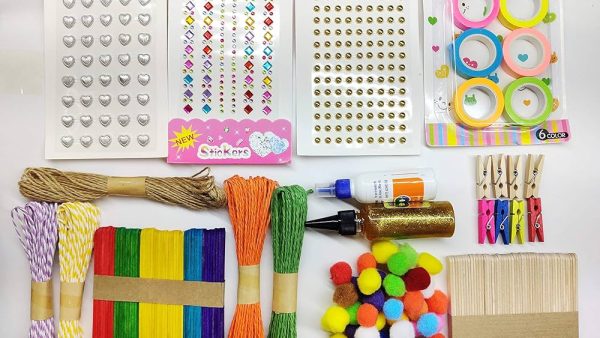There are many ways that you can maintain and fix your old furniture depending on its type and condition. You can also consider recycling it instead of throwing it away. For example, you can recycle the material itself that the piece is made of, or you can take it as is to the community recycling facility.
You can also reuse and repurpose old furniture pieces and give them another life. For instance, some people use old wood ladders to hang towels or blankets. And also, they make new furniture like beds and sofas by using wood pallets.
How to Maintain your Furniture for Longer Periods?
The state of your furniture and its material will naturally deteriorate and change over time because of its exposure to the elements and the frequency of use.
Here are the most common causes of damage to different types of furniture materials:
Wood: furniture made of wood is usually damaged by water and humidity, heat, excessive sunlight, and harsh cleaning products like bleach or ammonia.
Metal: metal is usually subject to damage from sharp objects as it may scratch the surface. Also, humidity which leads to rust is a factor sometimes.
Fabric/Leather: damage to fabric or leather is usually caused by wear and environmental elements like water or fire. Also, the fabric used in furniture can easily get stained.
Plastic: most plastics are not heat resistant and can easily melt when subjected to a heat source. Additionally, it can be broken quite easily.
Glass: glass or glass-like materials are somewhat fragile, in addition to being prone to scratches and cracks due to extreme conditions and temperature changes.
Guideline for Repairing Furniture
- Wood Furniture:
Since wood can be damaged in many ways, the following list will help you in fixing each kind.
Burns and watermarks: you can remove the white marks left on your wood surface by water or hot objects by using a special watermark remover cloth usually found in stores or petroleum jelly. If the mark left by water or heat damage is black that means that it has a deeper effect and can only be fixed by sanding and refinishing the piece.
Stains: if the stains on your wood are caused by a water solution like coffee, tea, or grape juice then you can clean it by using a water-based cleaner or white cider vinegar. If the stain is caused by ink, you can remove it with a hand sanitizer that contains at least 65% alcohol or denatured alcohol and a soft cloth.
Dents and scratches: some types of wood are soft and easily scratched or dented. Dents can be fixed by using a drop of two of water and a thin smooth cloth in addition to hot iron. You should put the water on the dent, cover it with the cloth, and iron the surface with the hot setting. For scratches, you can use fine steel wood pads and some wood polish and gently buff the surface.
Cracks: you can use wood filler, wood glue, and sandpaper to fix cracks or small breaks in a wood furniture piece.
- Metal Furniture:
Rust: you can remove rust from iron furniture pieces by using stainless steel or a wire brush on the rusty parts to clean them right to the bare metal. Then you should apply a rust inhibitor to the sections and let them dry. You can finish it after it is dry with paint.
Corrosion: you can remove the aluminum corrosion if it is still at an early stage. This can be done by using a rotary tool with a stainless-steel brush to rub the damaged parts off, a degreaser to clean the metal, and steel wool to give a smooth finish. After this, you can apply a full coat of car wax to prevent more corrosion to occur.
Chips and cracks: you can apply a metal paste and hardener in the damaged area and sand it down after it is completely dry to get a smooth surface. You can seal the area with a protective layer or car wax also.
- Fabric:
Stains: some fabric that is used in the furniture is made with a stain-resistant synthetic material. Also, you can buy a spray with a fabric protection formula resulting in sealing the outer layer of fabric. Additionally, you can use a fabric cleaner, but make sure to dry the piece well because the cleaner might seep into the inside of the piece and cause further damage.
Tears: fabric tears can easily be sewn back together or patched up with a bigger piece of fabric that matches the one used in the piece.
- Leather:
Tears: tears in leather are better handled by a professional, however, they can be fixed by patching.
Peeling or flaking: this type of issue is extremely common in leather materials, and mostly it can only be fixed by reupholstery.
Scratches: if your piece of furniture contains scratched waxed leather, then you can fix it by using a hairdryer with a low heat setting. Subjecting the waxed leather to heat will melt the wax enough for you to massage it on the scratched area to regain its previous qualities. You can also use a leather repair cream with a similar color to your piece and apply it then let it dry before using the piece.
FAQs
Is it cheaper to reupholster a couch or buy a new one?
This depends entirely on the quality of the fabric you choose and the quality of your piece of furniture itself. However, sometimes the cost of reupholstering a couch would be less than buying a new one of the same quality. You may have a perfectly good sofa that can be brought back to life by just recovering it with a new fabric.
What do I use to fill gaps in wood?
You can use a material called wood filler or use wood glue and sawdust to give the same result. After the mixture is dry you can use fine-grade sandpaper to get a smooth finish.
How do I fix wobbly furniture?
It is possible to use metal corner braces or metal connectors and fasteners for holding metal pieces a bit firmer. However, metal hardware is not the best option when it comes to wooden furniture. This is because metal is much harder than wood and any screws will end up pressing against the wood, enlarging the holes, and loosening with time. In fact, the best way to reinforce wood furniture is by using a tightly fitted joint that is well glued. The trick here is to use good quality wood glue and a right well fitted joint.






